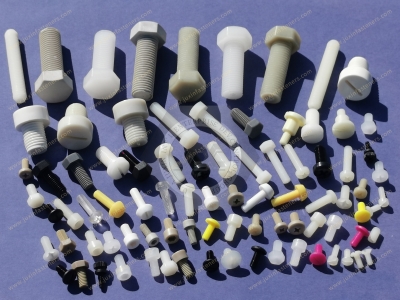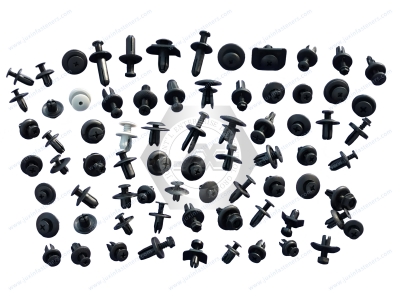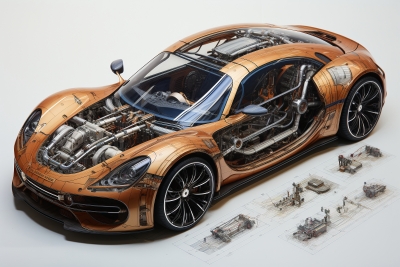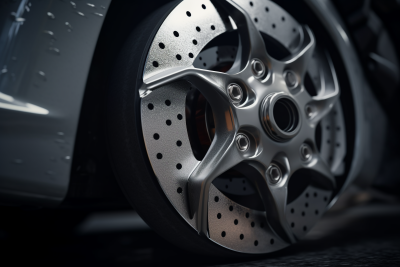Call Us
+86 136 6007 9809
Call Us
+86 136 6007 9809
Oct. 30, 2023
Plastic has the advantages of being lightweight, impact-resistant, transparent, good molding, good coloring, and low processing costs.
Plastic fasteners are widely used as connection parts for automobile installation and fixing. They are used in many automobile bodies, interior and exterior, chassis, engines, and electronic and electrical connections and installations. Automotive plastic fasteners and their appearance, characteristics, use of the scene, related product standards, and plastic fasteners commonly used materials and properties.
Types of plastic fasteners
1. Push-in type snap fasteners: Push-in type connects internal and external trim panels and bodywork during vehicle assembly. Different functions and installation locations can be divided into anchor snaps and A-type snaps, related product sizes, and installation locations.
A. Anchor-type snap and A-type snap: The size and specification of the related products refer to Q691 QC/T603; many deformed products are based on standard products.
Anchor snap and A-type snap: the connection aperture and the thickness of the connected parts can be referred to as Q691,
B. Christmas tree snaps, the size, and specifications of related products can be referred to as Q693-QC/T604 Type B snaps or Q694-QC/T605 Type C snaps.
Christmas tree snaps are used to fit round mounting holes and are disposable parts.
In practice, thousands of different types of sizes and specifications are far from being standardized.
Christmas tree snap: connection scheme, hole diameter, and thickness of the connected parts can be referred to Q694. The illustration and size specifications are as follows:
C. Plastic open-end pins: The size and specifications of the relevant products refer to Q692-QC/T350 Plastic open-end pins; many variants of products based on standard products exist.
Plastic cotter pins: plastic cotter pins have good removability and higher connection strength; if they are made into a closed type, they also have a specific waterproof effect.
Automotive interior clips
The characteristics of the snap fastener: Snap is used for a part and another part of the embedded connection or the overall locking mechanism, usually used for plastic parts of the joint; its material is generally composed of plastic materials with a certain degree of flexibility. The most prominent feature of the snap connection is that it is easy to install and dismantle and can do tool-free disassembly. Now, snap connection technology has been increasingly used in automotive interior parts of the connection.
Components of Snap Fasteners: Snap fasteners are generally composed of positioning pieces and fasteners. The role of the positioning parts is to guide the carabiner to reach the installation position smoothly, correctly, and quickly during installation. The role of the fastener is to lock the clasp with the substrate and to ensure that the use of the process does not fall off. Depending on the application and requirements, fasteners can be removable or non-removable. Removable fasteners are usually designed so that when a certain amount of separation force is applied, the snap will come off, and the two connectors will separate. This type of snap is often used to connect two parts that must be divided frequently. Non-removable fasteners require the fastener to be artificially deflected to separate the two parts. They are often used to secure the connection of parts that are not to be removed during use.
Snap fasteners are mainly used for the installation of automobile door sill guards, and they have three purposes:
A, 1 for the wire harness through the hole, the role is to fix the wire harness in the door sill;
B. 2 is a door sill guard mounting structure that secures the door sill guard to the door sill;
C, 3 is a carpet mounting structure that secures the carpet.
The four structures secure the entire carabiner to the threshold. After installation, the structures open on both sides to prevent the carabiner from falling off.


Plastic Nuts
Plastic nuts are a branch of various nuts. Its role is to use bolts to combine more than two parts.
According to the processing material classification:
Nylon nuts, PC nuts, PVDF nuts, PP nuts, etc.
According to the shape of the nut classification:
Cap-type plastic nuts, Plastic nuts with spacers, Hexagonal plastic nuts, plastic self-locking nuts, etc.
Classification by thread specification:
Metric thread:M2,M2.5,M3,M4,M5,M6,M8,M10,M12,M16,M24
American thread:2-56,4-40,6-32,8-32,10-32
Inch thread:1/8",1/4",3/8",1/2",3/4",1", etc.
Physical properties:
1. Torsional strength of the head and screw combination part
2. The thread size of plastic nuts must be standardized. Due to the water absorption of different plastics leading to varying sizes in different environments, this standard is not as strict as metal nuts.
Chemical properties: Acid resistance, Alkali resistance, Fire resistance. Insulation properties
Nuts with threads, on the other hand, are available in two forms, either pre-installed on the sheet metal holes of the body to be screwed into the bolts during assembly or to be used in conjunction with the welded bolts of the body.
Automotive Plastic Pipe Clamps
Automotive fuel systems have many exhaust lines, and plastic hose clamps are welded (for plastic fuel tanks), snap-hooked, or threaded to the fuel tank or surrounding structure after restraining the lines.
There are three ways of fixing the hose clamps to the bodywork:
1. The pipe clamp itself has an over-hole, which is fitted to the welded bolt of the body and then tightened with a nut fixing;
2. The hose clamps themselves are designed with clips that snap directly into the sheet metal holes of the body;
3. The pipe clamp has a nut design, which can be fixed with self-tapping nails or matched with the welding bolts of the body.
Plastic Ties for Automobiles
The diesel engine generates heat during automobile operation. The radiator releases this heat to the surrounding indoor space. As the automobile has many routes and tubes in its body, the car tie must be able to bear high temperatures and resist rotten roads.
Automotive ties are found in a wide variety of automotive applications.
The vast majority of automotive ties are plastic and generally used as part of an integrated wiring harness in each automobile. One tie organizes, and the other tightens the connection, connecting all the car's processes into an inseparable whole.
The load of the car on the car tie regulations.
Automobile diesel engines in the work of the process will send out a lot of heat, the general shell of the temperature is very high, so the provisions of the car tie can have the ability to resist high temperature, in addition to the car which the road encountered, so in many of those times, the compressive strength of the automobile tie should be very high, to ensure that components are not easy to run the whole process of loosening, to ensure the safety of driving.
In automobile installation, the tie is commonly used in the sensor harness, roof connection harness, air conditioning inlet and outlet pipe, ventilation pipe, brake vacuum pipe, and other connection positions.


Materials and Properties of Plastic Fasteners
Plastic fasteners usually use materials to polycaprolactam - nylon PA6, polycaprolactam - nylon PA66, and polyformaldehyde POM.
Plastic fasteners, the main physical properties to consider:
1. The first is the performance of high and low-temperature resistance.
2. The second is the performance of impact resistance
3. The third is tensile properties.
The fourth is dimensional stability.
Snap products should be specified insertion force and pull-out force; insertion force should not exceed 60N, and pull-out force is generally 80N ~ 750N.Plastic nuts, according to the standard sheet metal square hole size, insertion force size, the size of the self-tapping nail, and the applicable torque. Matching self-tapping threads with plastic nuts should be specified by QC/713. Due to the significant difference in plastic properties, verifying the matching holes, self-tapping nails, and torque when using them is recommended, especially when doing reverse engineering; the parameters copied precisely will not be applicable due to the difference in plastics. Depending on the specifications, different insertion and extraction forces are specified. The insertion force should not exceed 60N. Locking force should be defined for tie-type products, generally ≥ 50N.
If you are looking for high-quality fastener screws & all kinds of plastic fasteners or technical support for structural design, please get in touch with me.adelajonly@gmail.com. Thanks.
Website: www.juxinfasteners.com
Contact Us
Tel.:
+86 020 8621 0320
+86 020 3121 6067
Technical Support:
Navigation
SEND INQUIREY